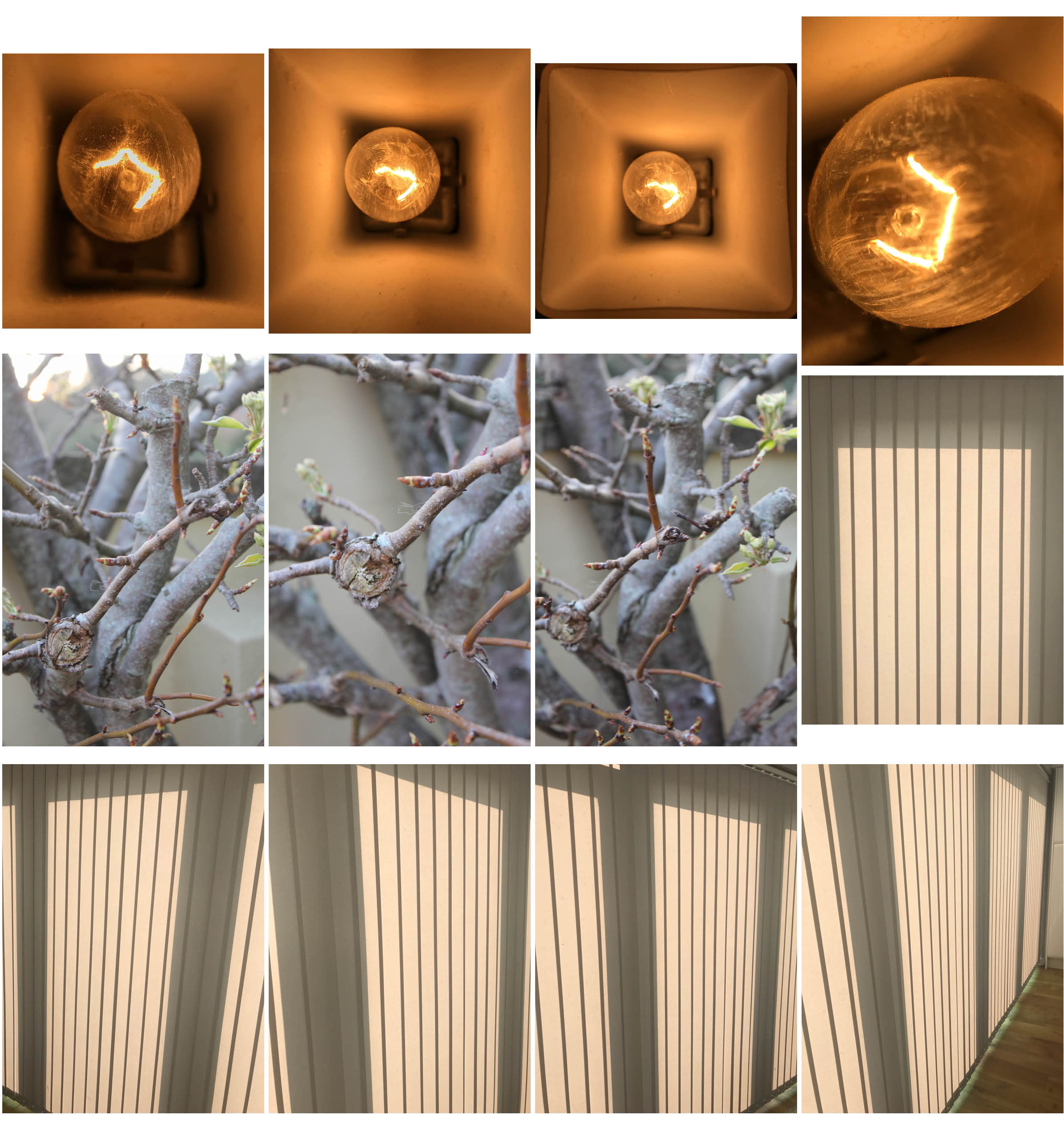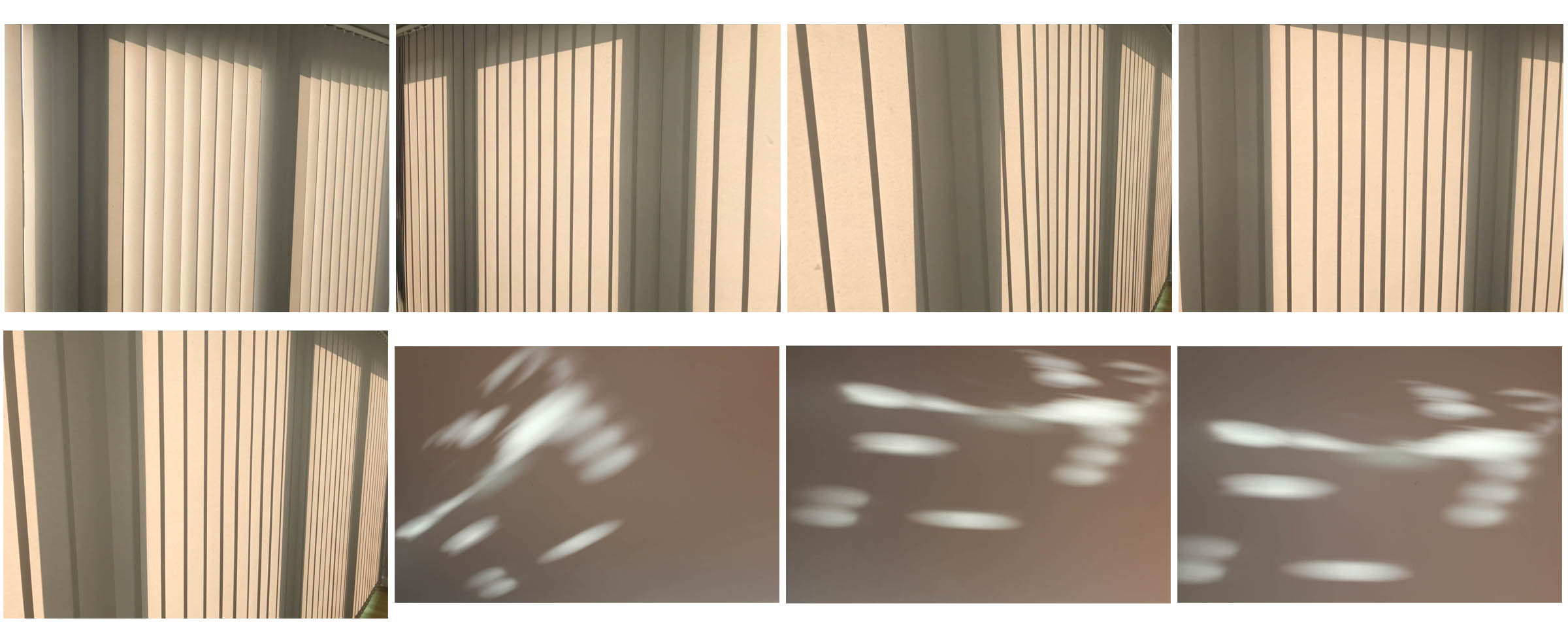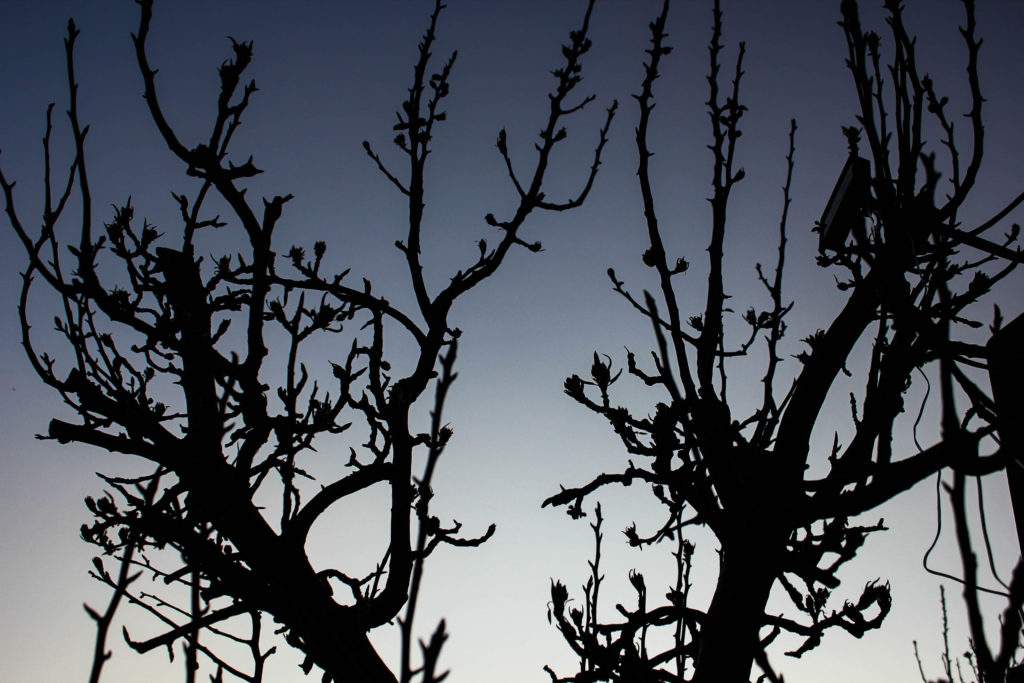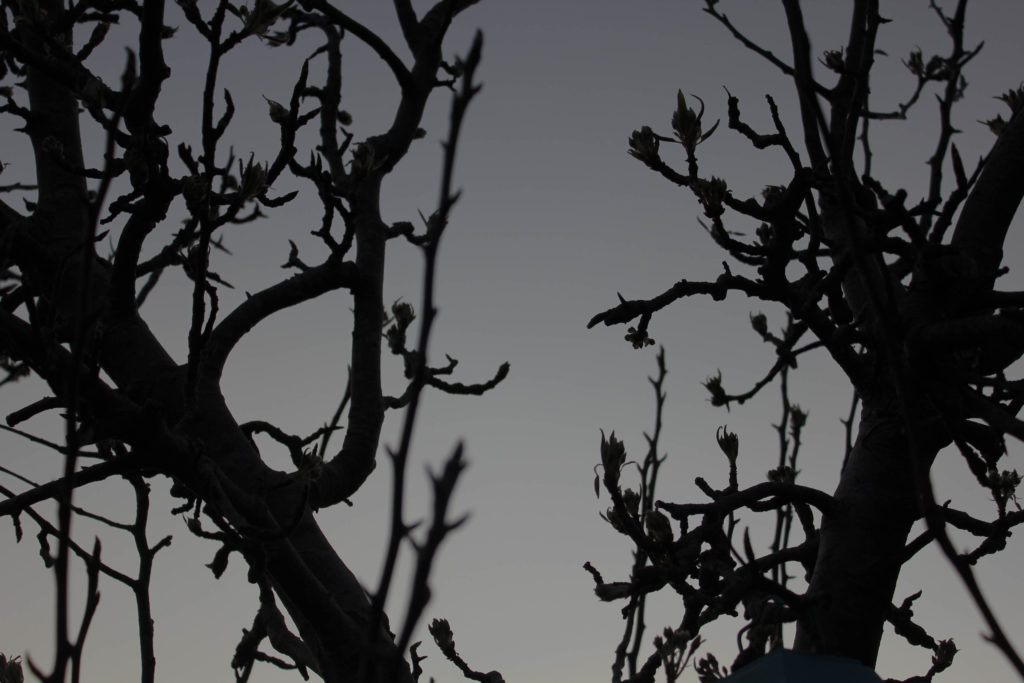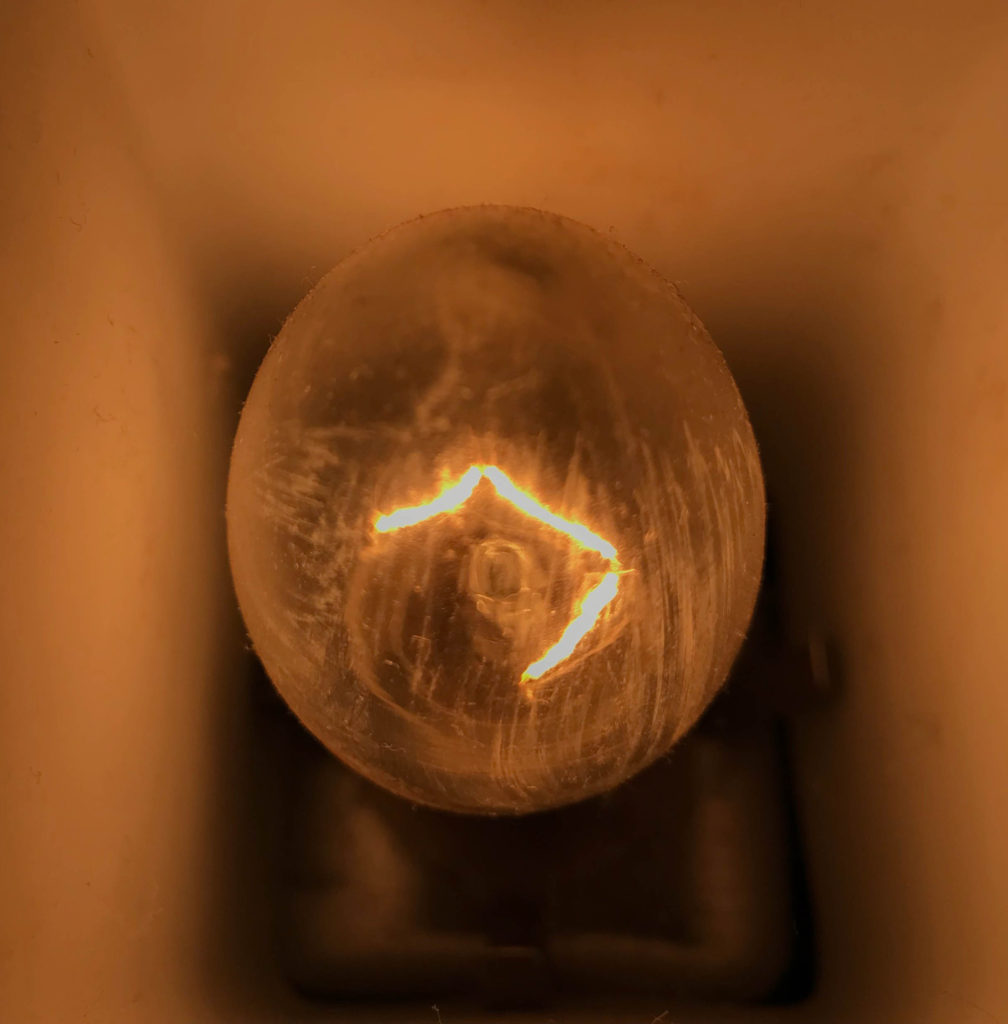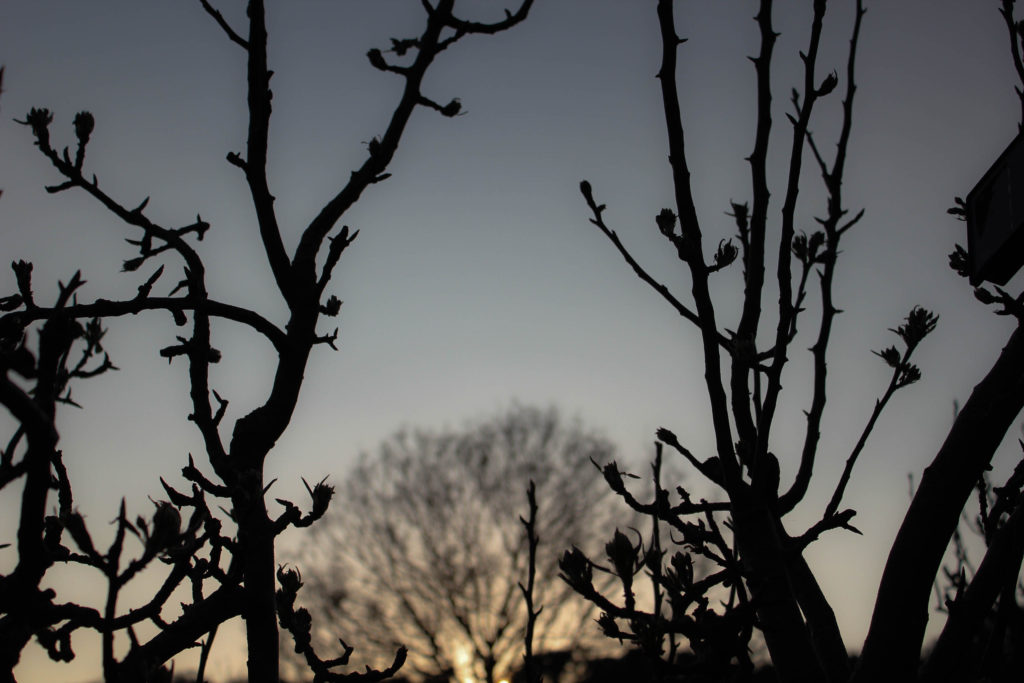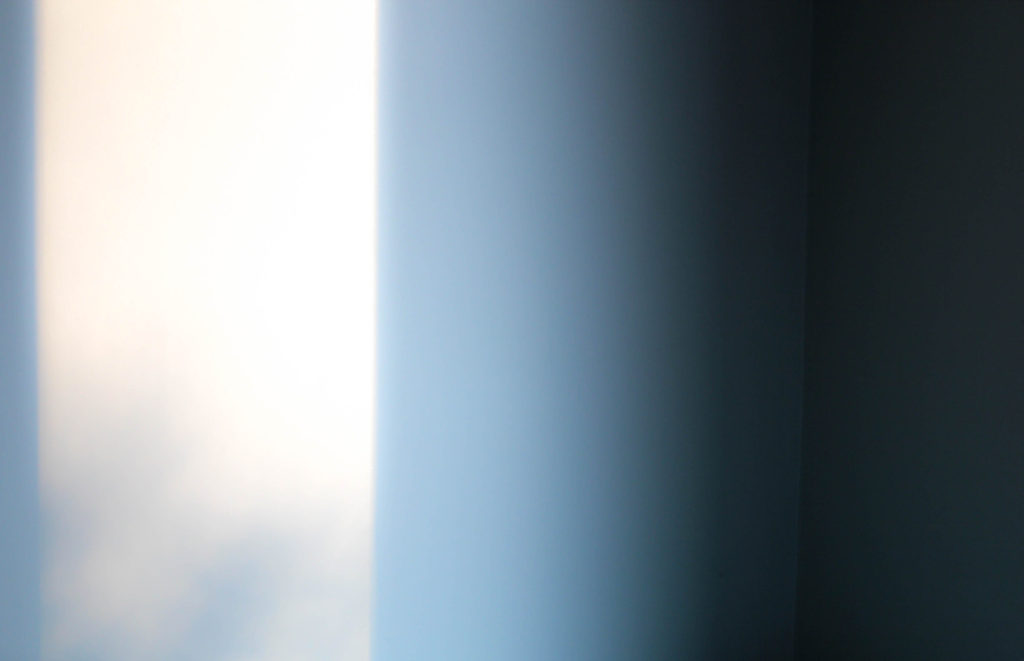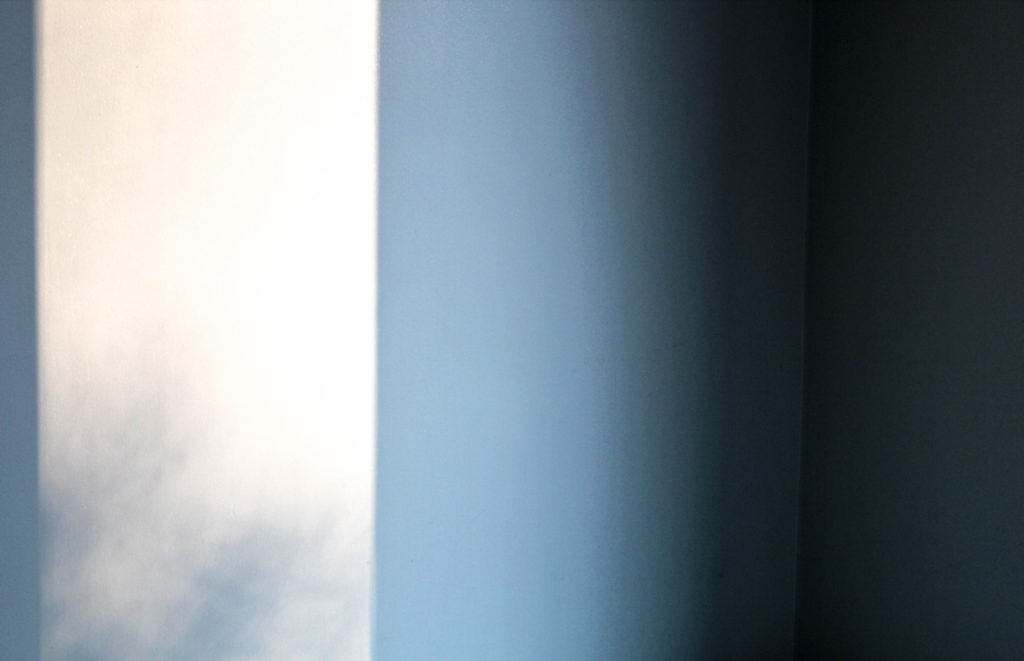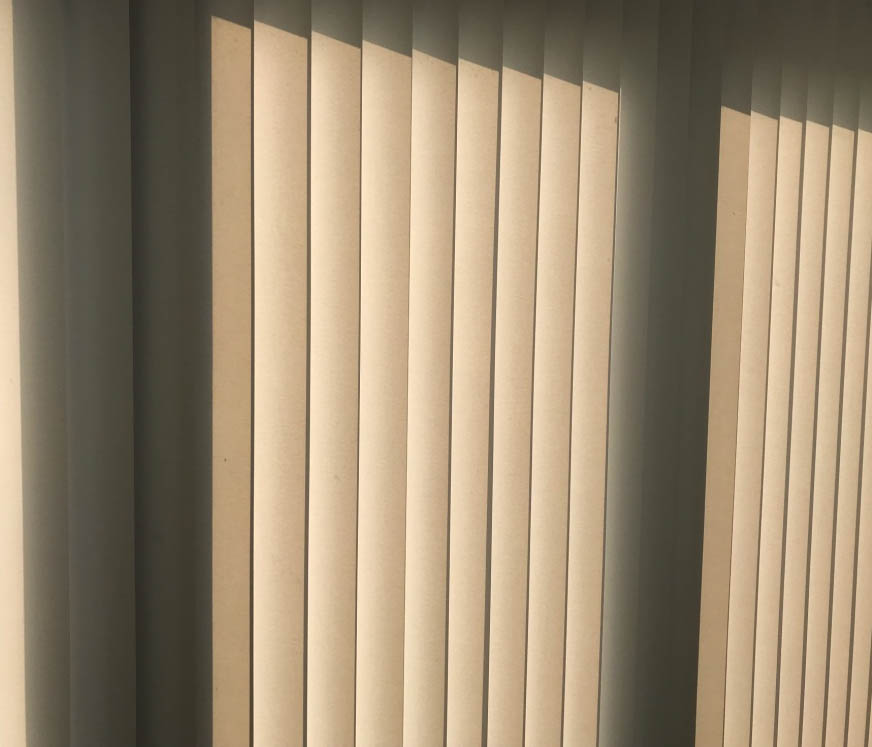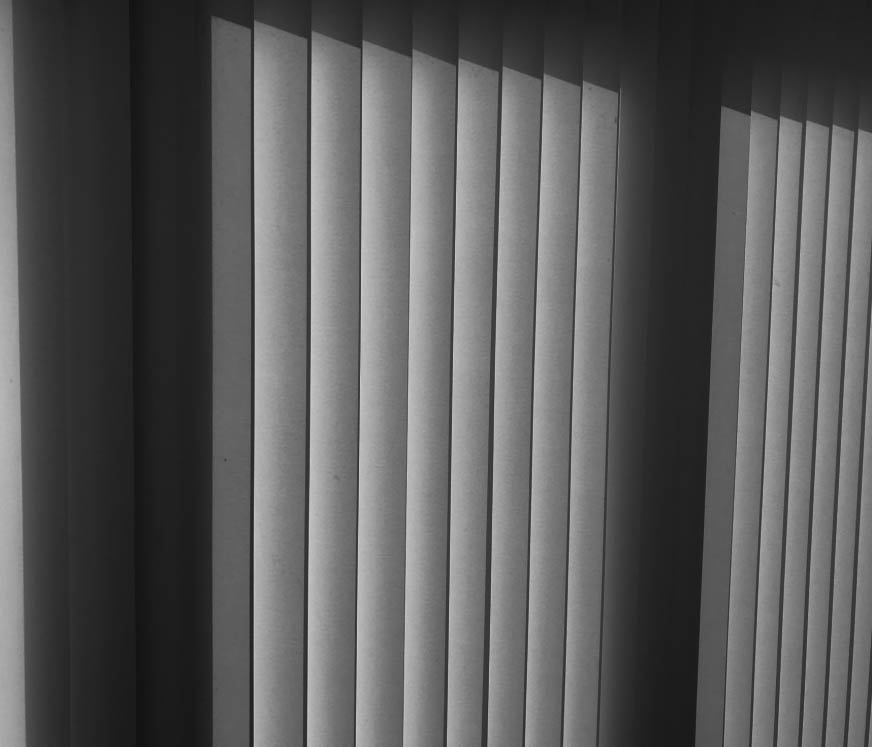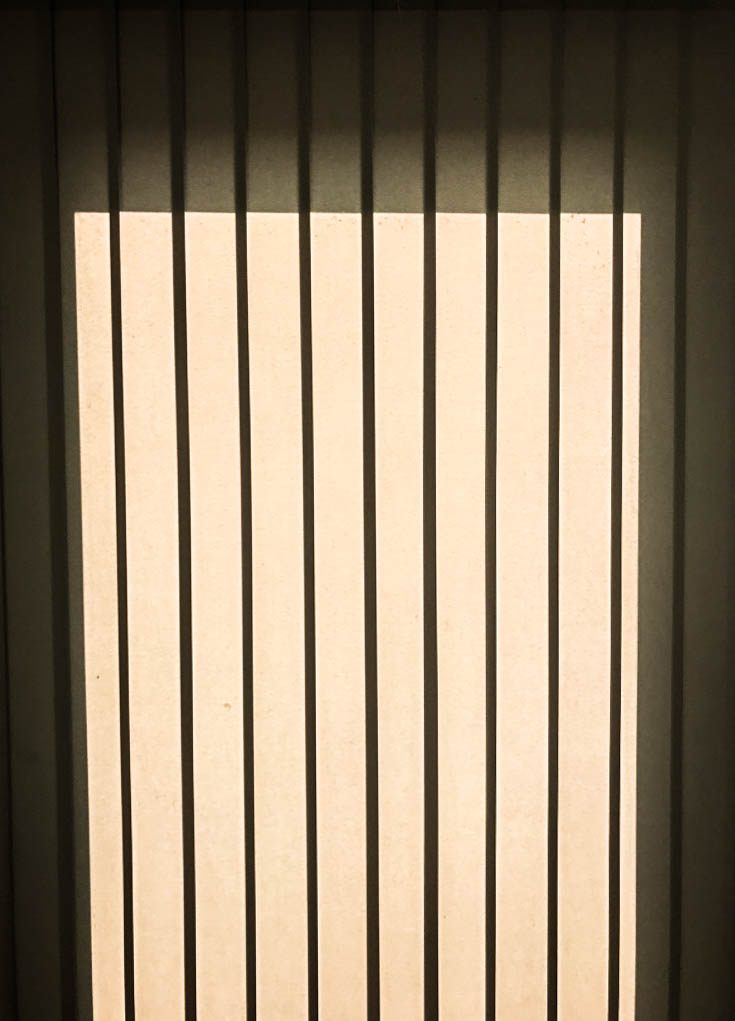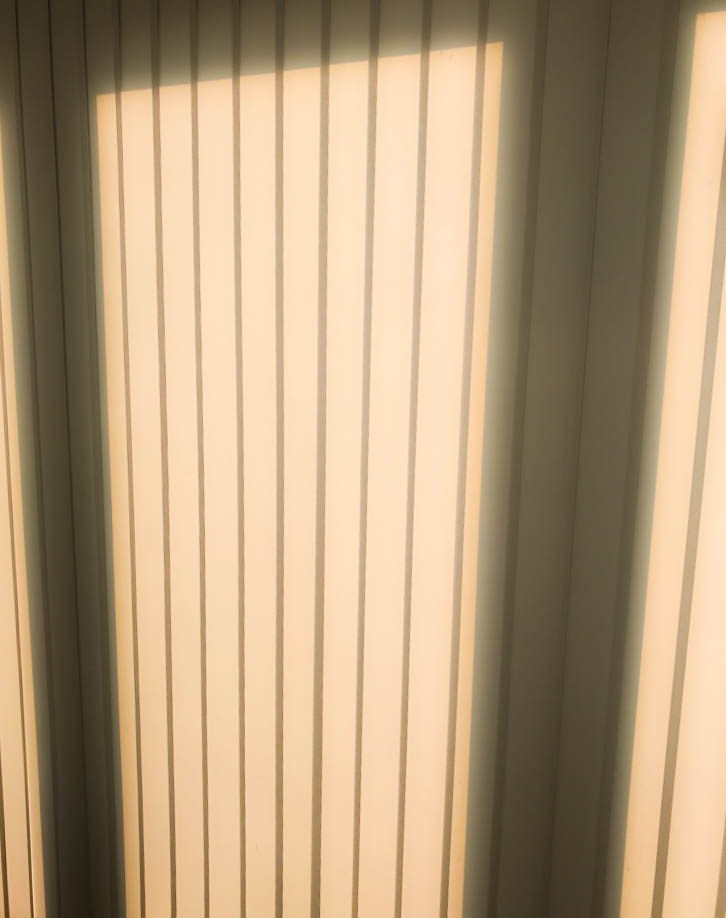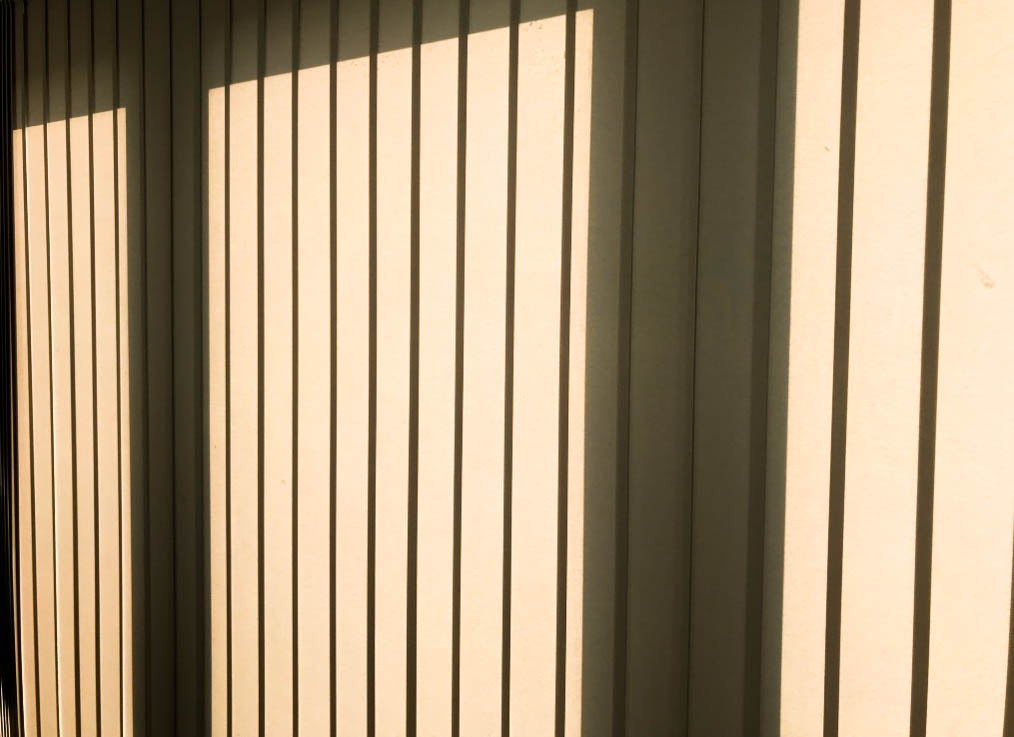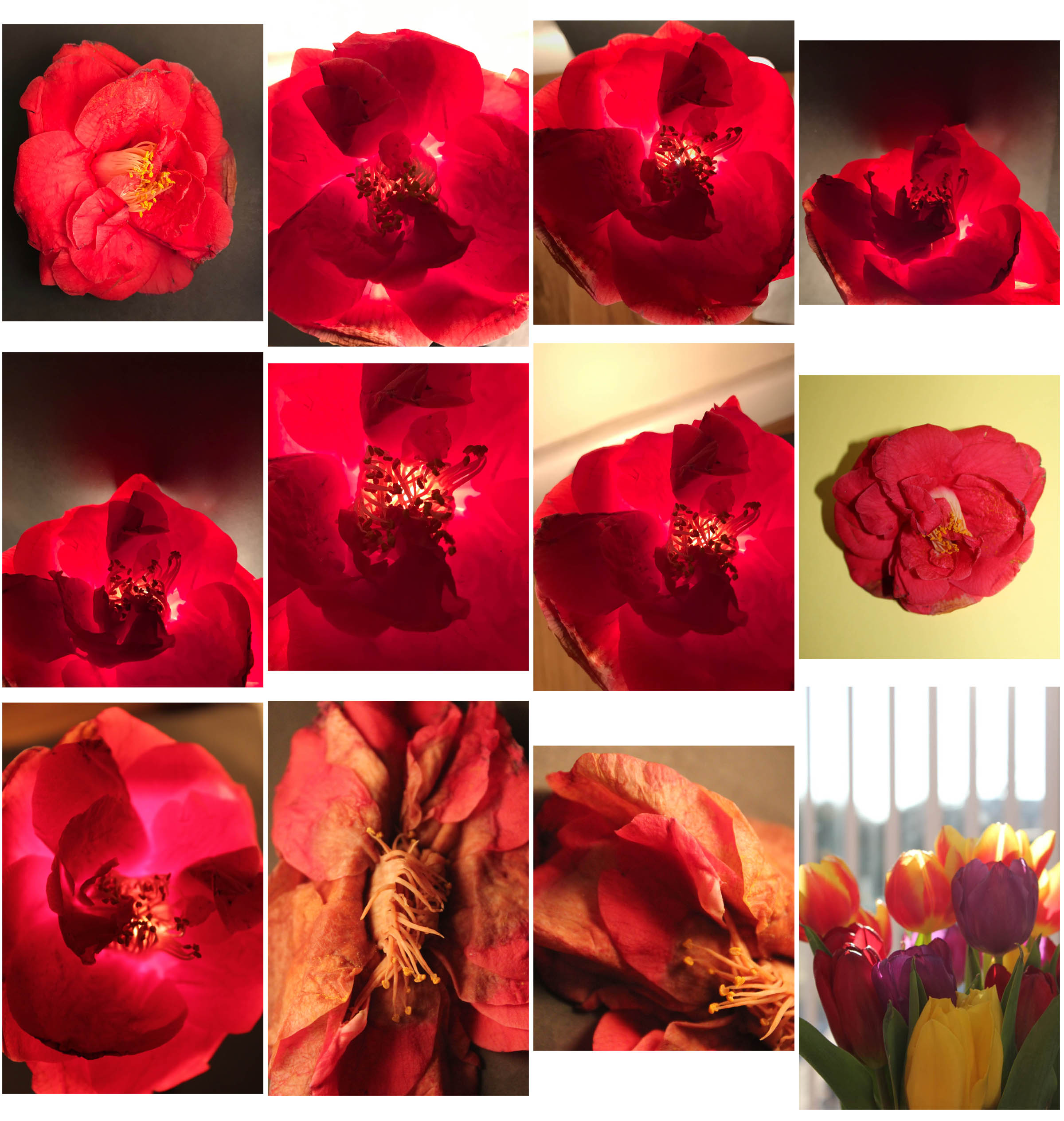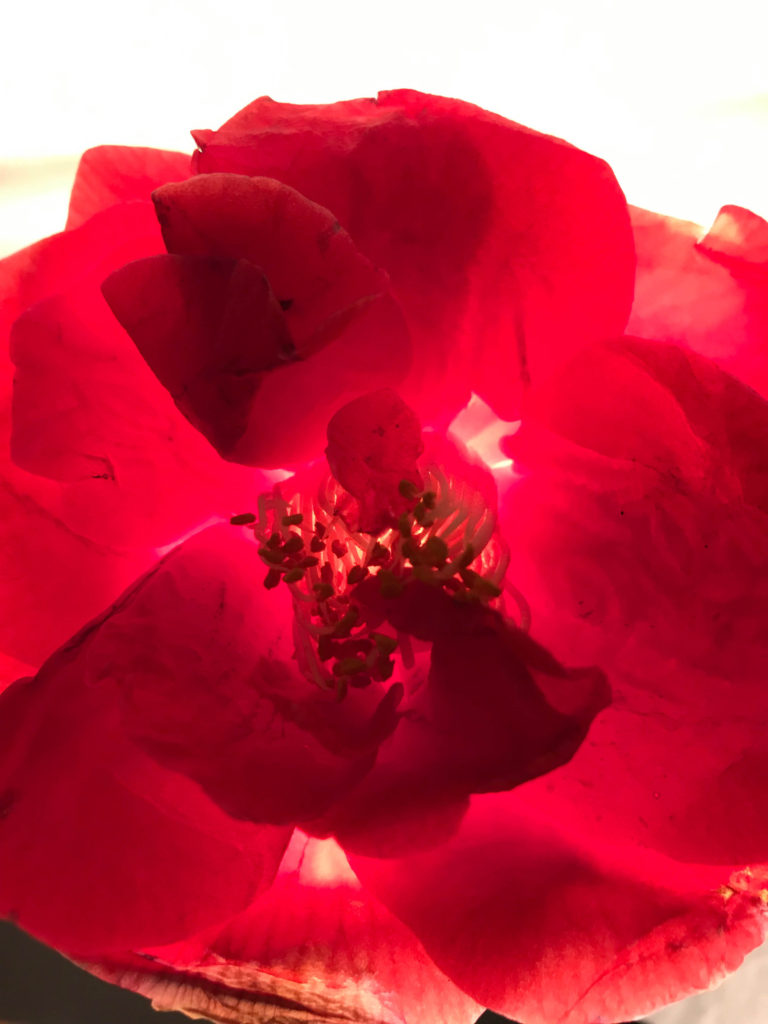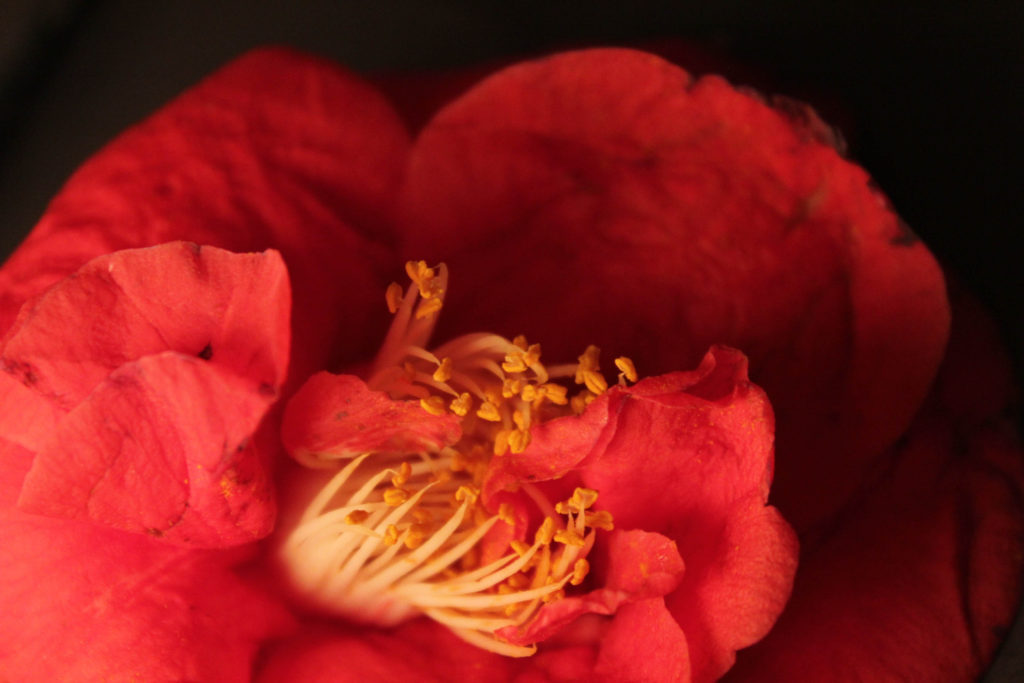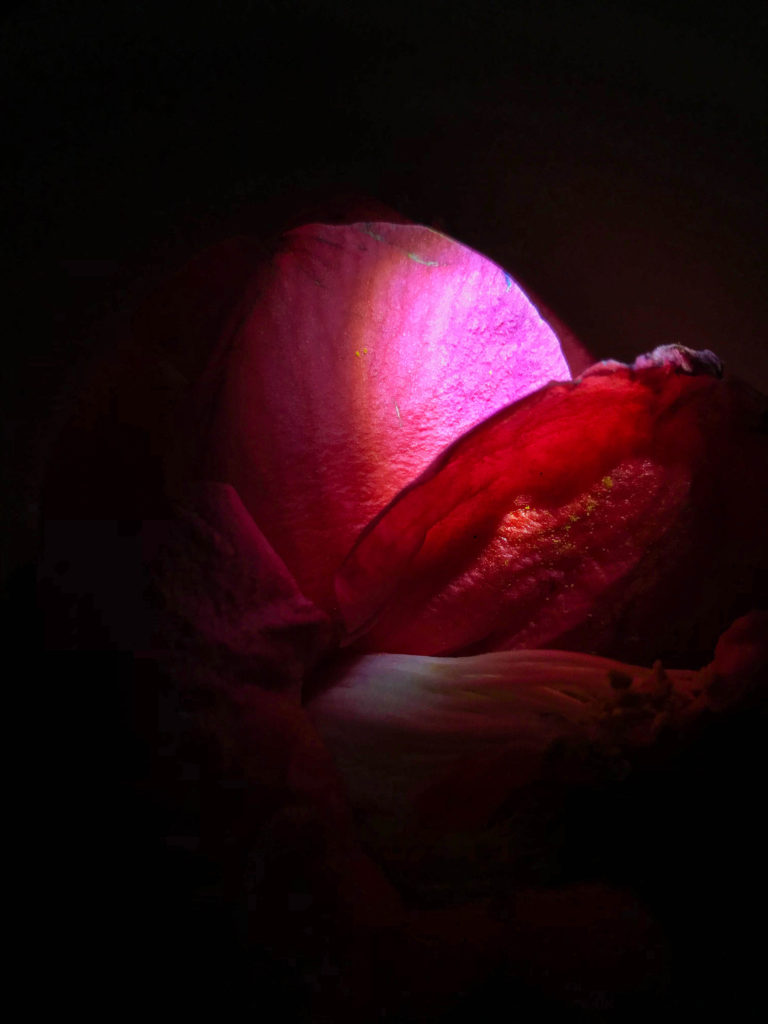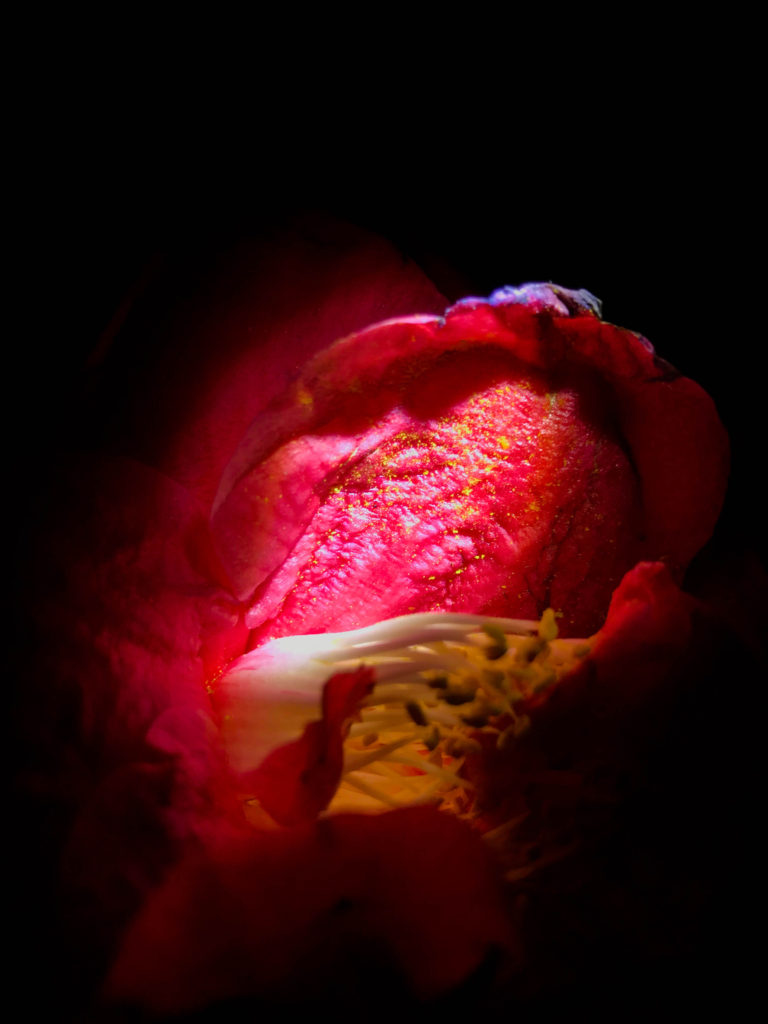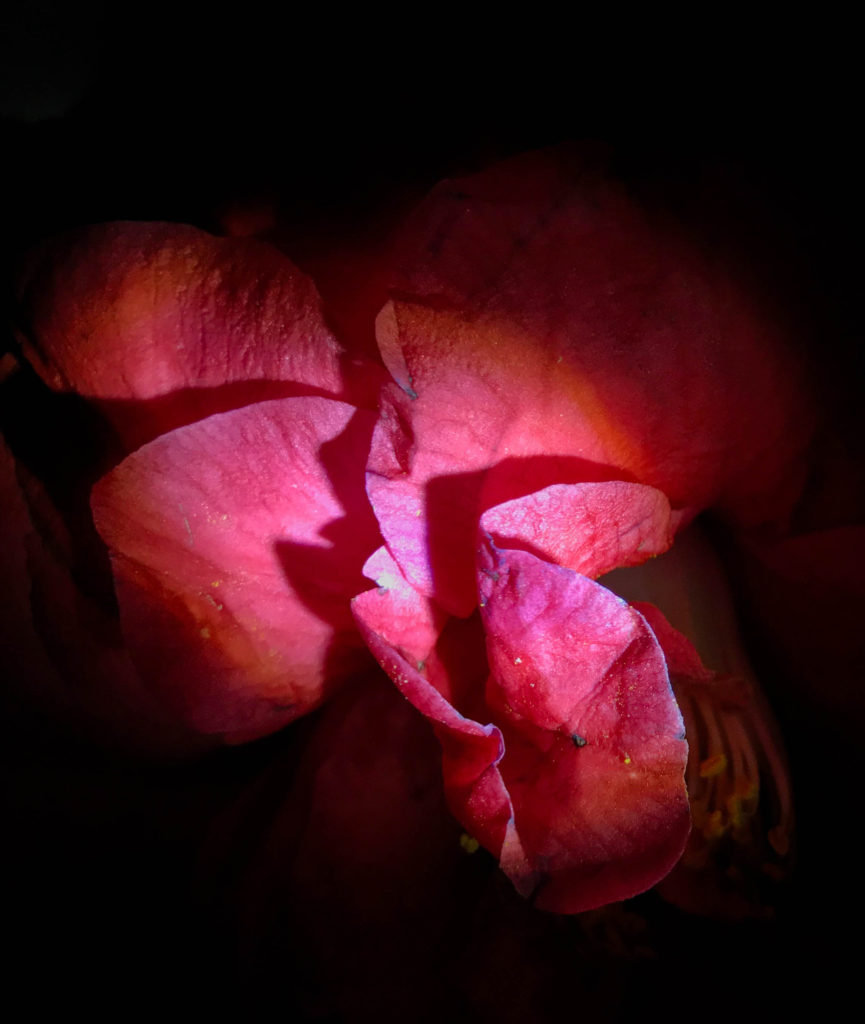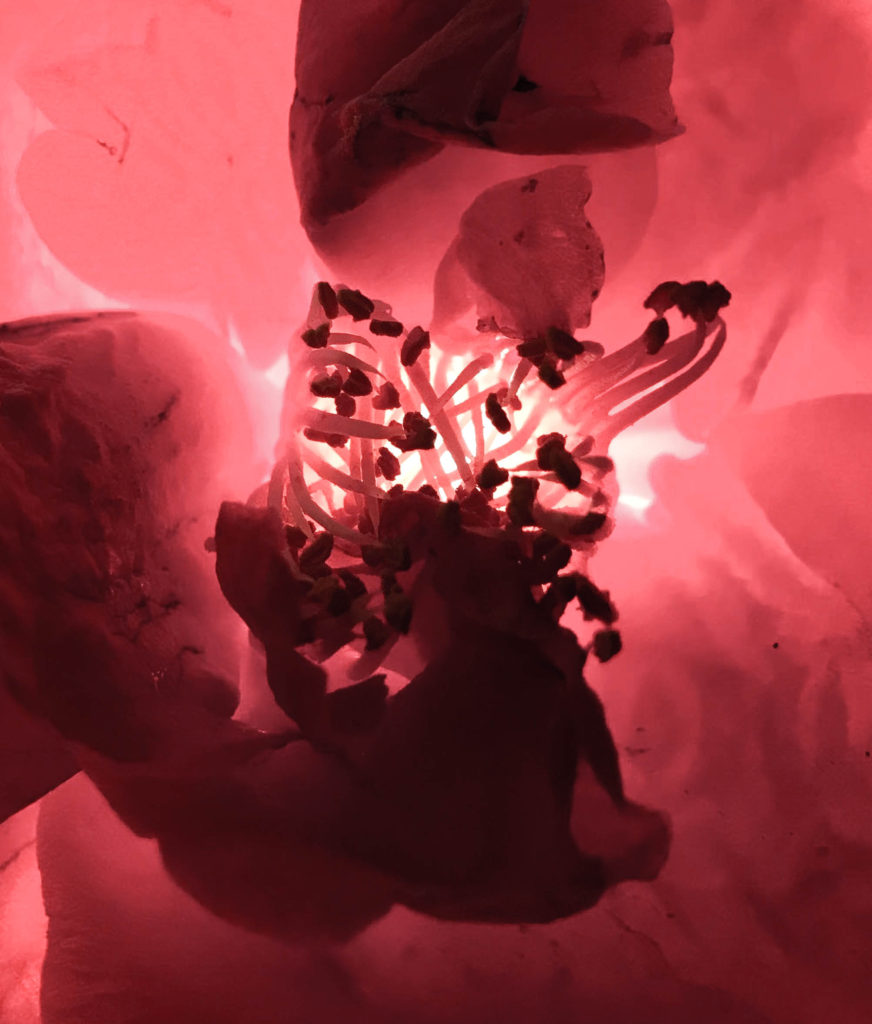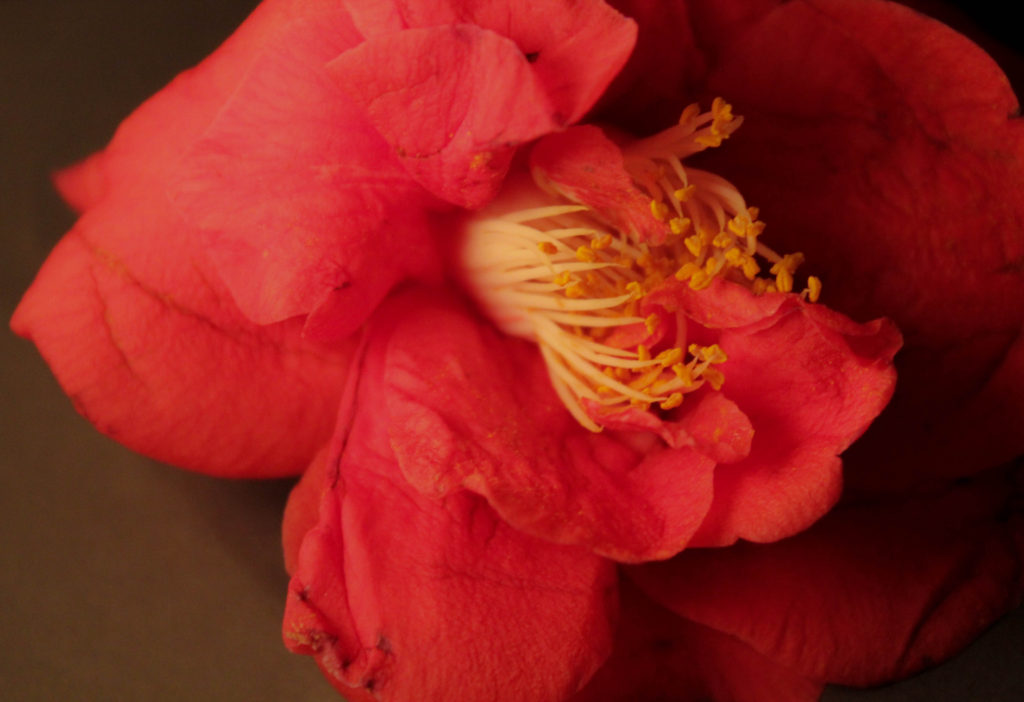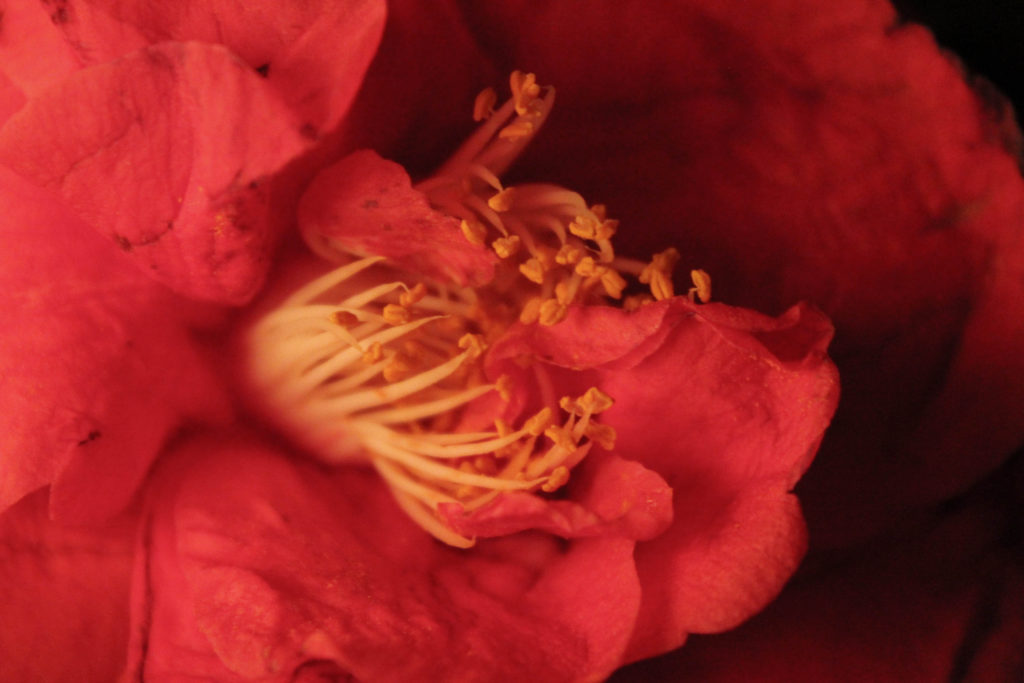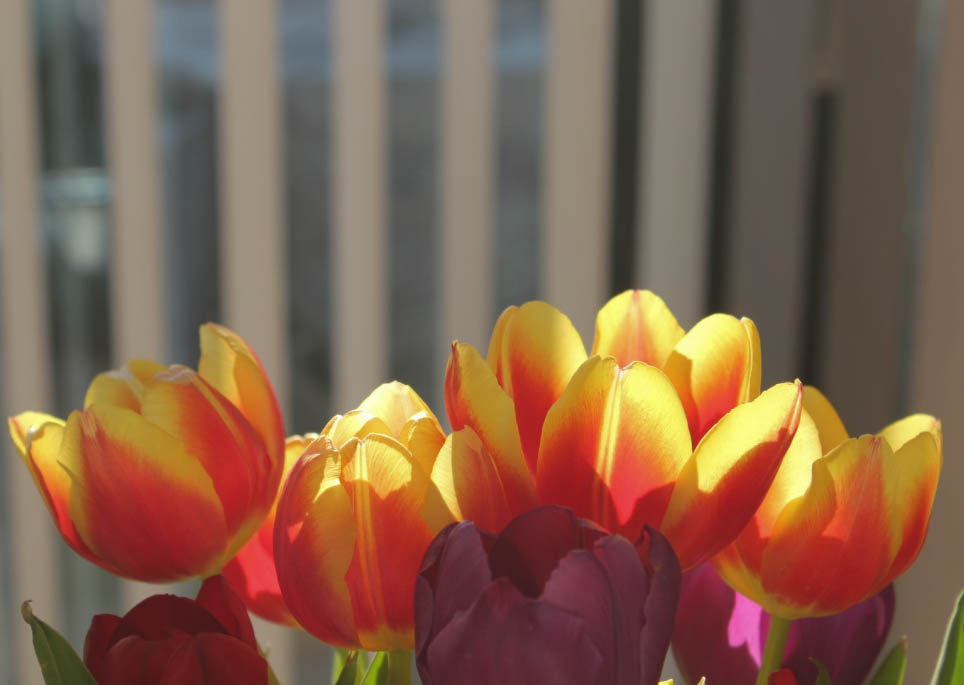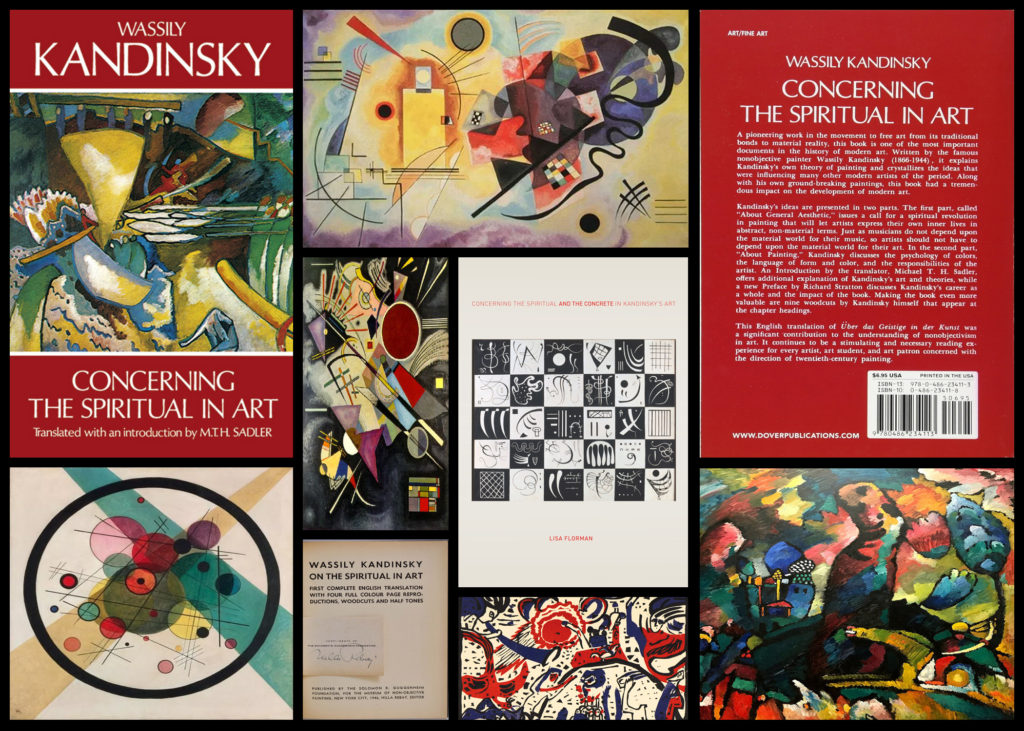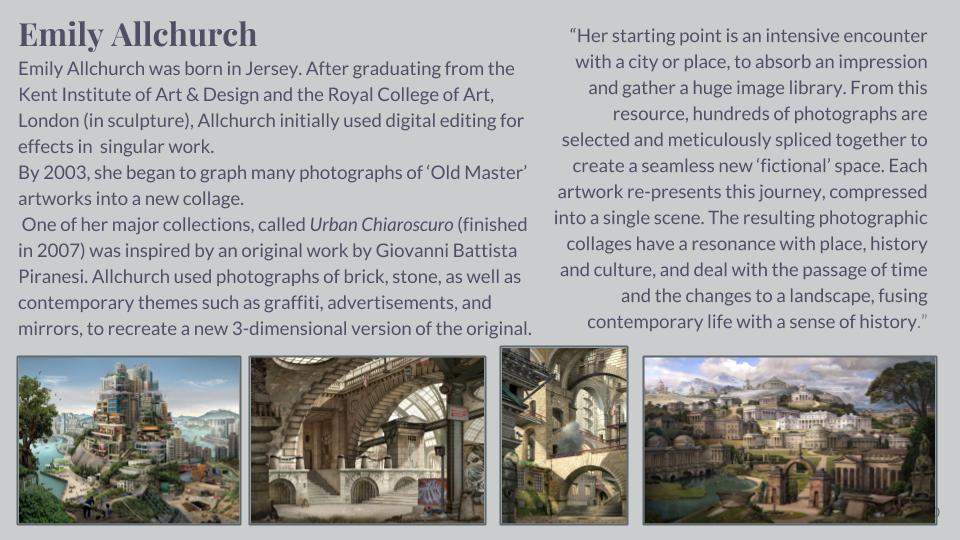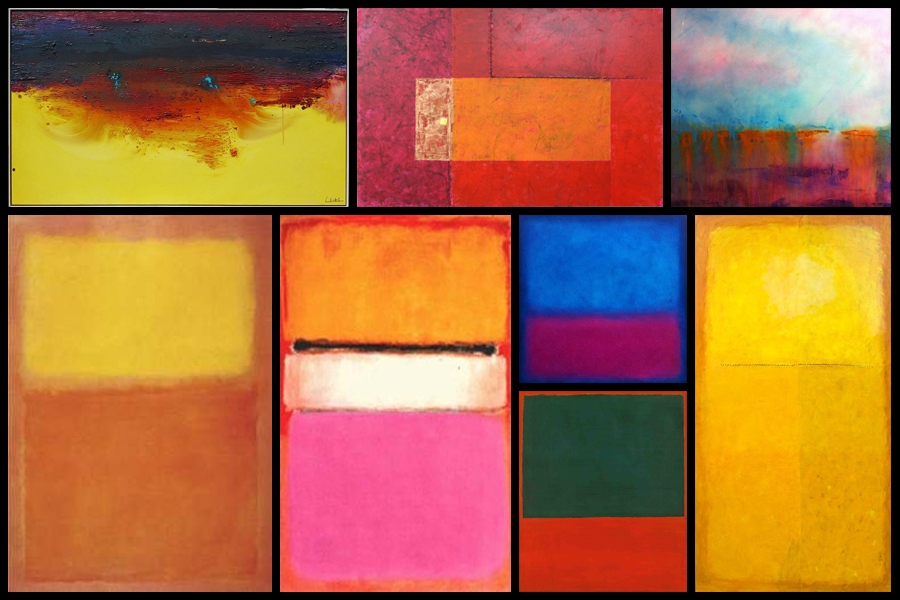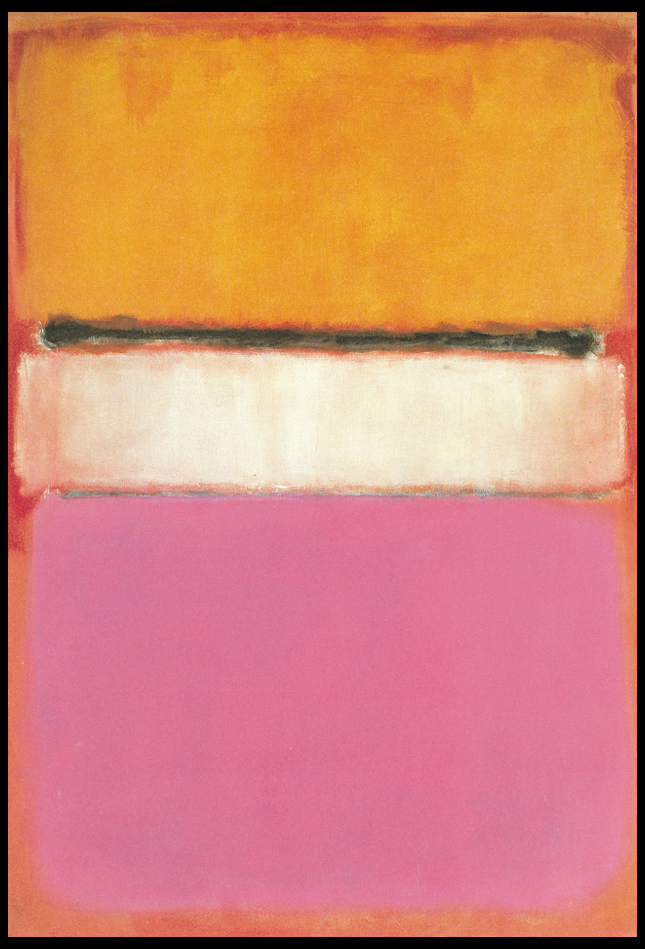CCA GALLERY
Overview of the cca gallery: The exhibition at the CCA gallery was a variety of more documentary focused aspect of photography, with some elements so highly edited when discussing new 20th century art and photography.
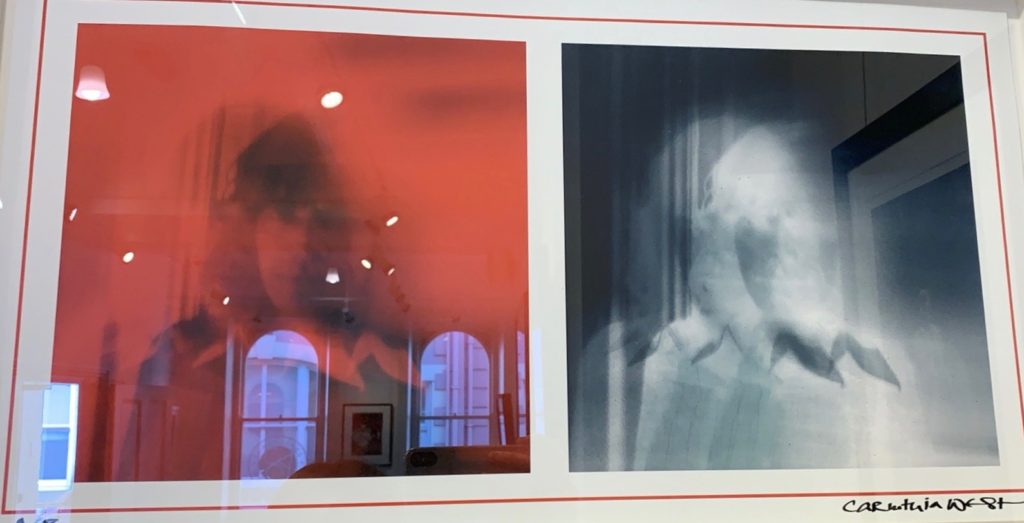
Going to CCA gallery I found two pieces which I belive could benefit my work and really influence the angle of my project. So far my work has been about the creation of beauty, However I have considered adding both beauty and chaos to form a disrupted narrative contrast, and I belive these two pieces perfectly fit into this possible expenditure of my theme. There is such a raw exposure of emotional expression, the sense of solitude and isolation coupled with the movement of the faces coming from within the centre of the composition, creating a new disposition of character. I also belive the use of red and black and white, creates not only a contrast between the pieces themselves, but both colours have strong connotations to strength of emotion. Red is a substantial denotation for that of suffering, pain and elements of blood. However, the black and white creates an element of exposure, as in you are looking into someone. This x-ray type of site shows an area well with-the aspect of your own chaotic image. My own work surrounding chaos could be produced more similarly to this work, but showing more of a movement instead of layered images, I will experiment with these effects, and possibly done with photos of different plants and mediums.
the artist: why they did this:
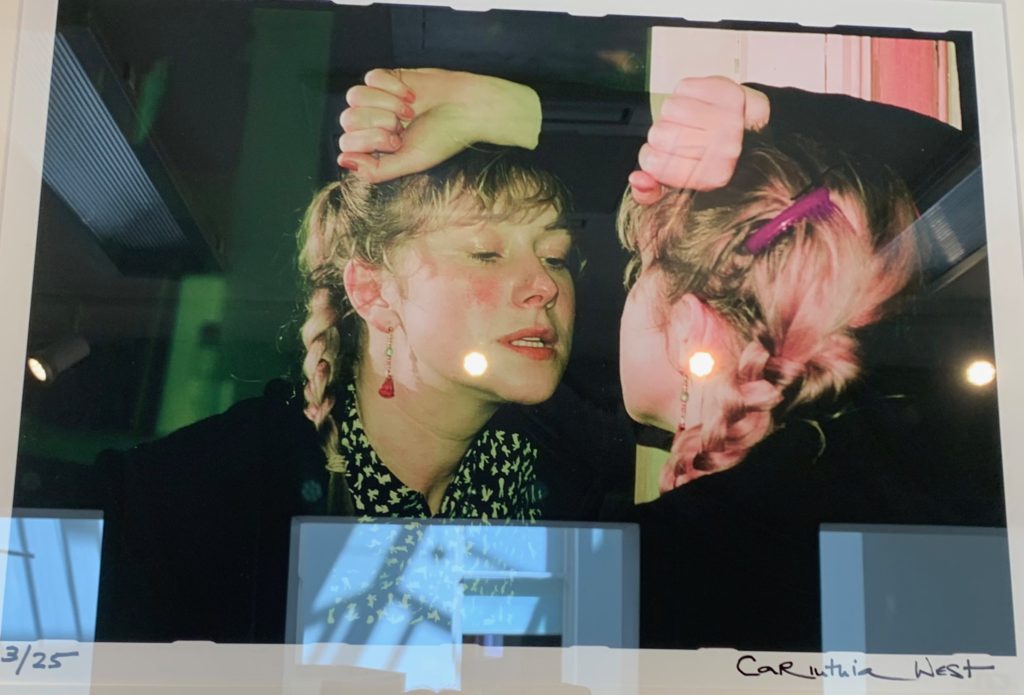
I chose this image also, as to my mind, there are clear connections to my shoot idea of self portraiture, there is a clear connection of emotional vulnerability, and almost a mocking or finding of personality. The character is presented as a form of mimicry, and done in such a way to show a vulnerability and a sense of false acts and emotions. I find it very interesting using objects such as a mirror to show a whole three dimensional view and performance of a person. I have spoken previously about the media within photography, and to my mind, this is a free flowing performance and an act of character, used in order to presented a certain display of masculinity or femininity, the use of the fist is only really visible to the viewer on the non reflected side, this sight of a tight fist accompanied with gritting teeth, perhaps is a warning or a clear dispute of women feeling anger and aggression as her posture and pose is very different from the femininity of the plait and jacket. I could link this to my project again finding what people find to be sad or happy and perhaps how unpredictable this could be due to someones appearance.
PUBLIC AND PRIVATE
The public and private was a very different exhibition than that of the CCA gallery. The exhibition was much more concentrated on the idea of pop art and pop culture. Much of the work was highly colourful, edited and abstract, made at the time of hugely monumental periods of popular culture. With many artists work such as, Andy warhol. Warhol was the artist who created the mediated expression, everyone one day will have 15 minutes of fame. I believe this is relevant to this exhibition as many of the works, were not created to from or create something seen but was to from and create a more controversial forming of elements. The exhibition itself was named ‘ pop icons of the 20th century, Britain and American pop art’ this work was emerging in the 1950’s in Britain and late 1950’s within America, the peak of pop art was in the 1960’s and went on to become the most recognisable art form of the 20th century. it was the revolt against the dominate approaches to art and culture and the traditional views on what art should be.
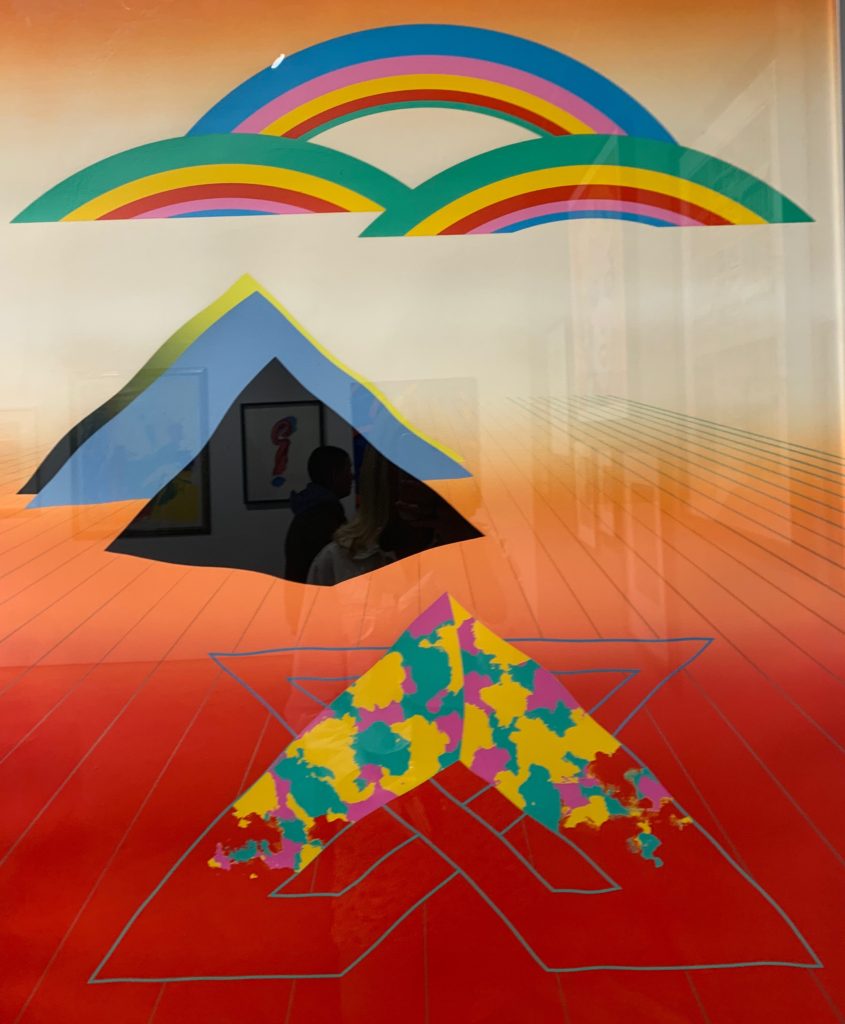
This piece I decided early on, was my least favourite piece I saw out of all three of the exhibitions. It is not to my taste, due to the wholly abstract lack of composition, showing three key areas, arranged with no intentional form scattered around the piece. Too, I belive the deep tonal red contrasting the the lighter abstract triangle, not only creates an uneasy element, but too contributes to the contrasting of red at the top of the piece. The lines are not straight, yet not so un-even to be considered an intentional element. I do not see the intention as to why this piece was formed, And this is my initial problem with the piece, It is definitely not conventional of art, yet does not, to my mind symbolise the revolution and refusal to show conformability of fine art previously seen. Additionally the contrasting of all the triangular shapes, to that of the rainbow and rectangular shapes , does not work well as an overall successful composition.
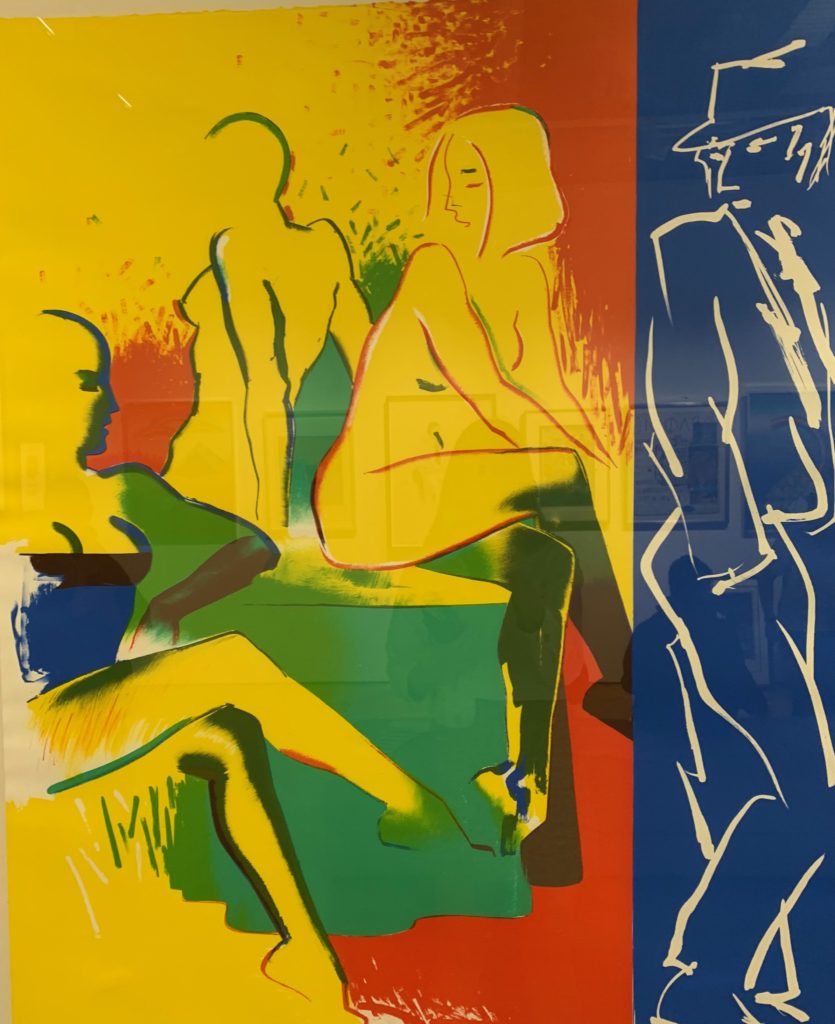
Lastly, I chose this piece as I found the use of the three primary colours, to be really successful. The piece itself, has such a strong centred composition with the primary attention being drawn into the female sitting down, the amount of levels within the piece allows your eye slowly to be drawn out and see everyone surrounding them. This piece was one of two from the artist Allen jones called table talk. I belive due to pop art being a more informal connection people are able to have and form a condition with art, this piece shows a demonstration of a real life scenario which too seems to mimic the everyday actions we all have. Not only within this piece is their a a clear element of seduction, but also a clear illusion of mystery within the piece, and perhaps a new form of seeing the male gaze. Their is also a clear juxtaposition of the women not wearing clothes and the male figure watching being dressed as a detective type of man. Because of this I believe it is changes form an unipersonal imagery, to emphasis a personal feeling and symbolism characterised into abstract expressionism of our own lives. Due to this piece being clearly a fine art piece and so not a photography image like my two previous inspirations, My intention of influence would be the way he so effortlessly captures an emotional connection shown through the sense of reality of the piece itself. The colours too are very bright and abstract which too is a pivotal element of seeing beauty within the world.

